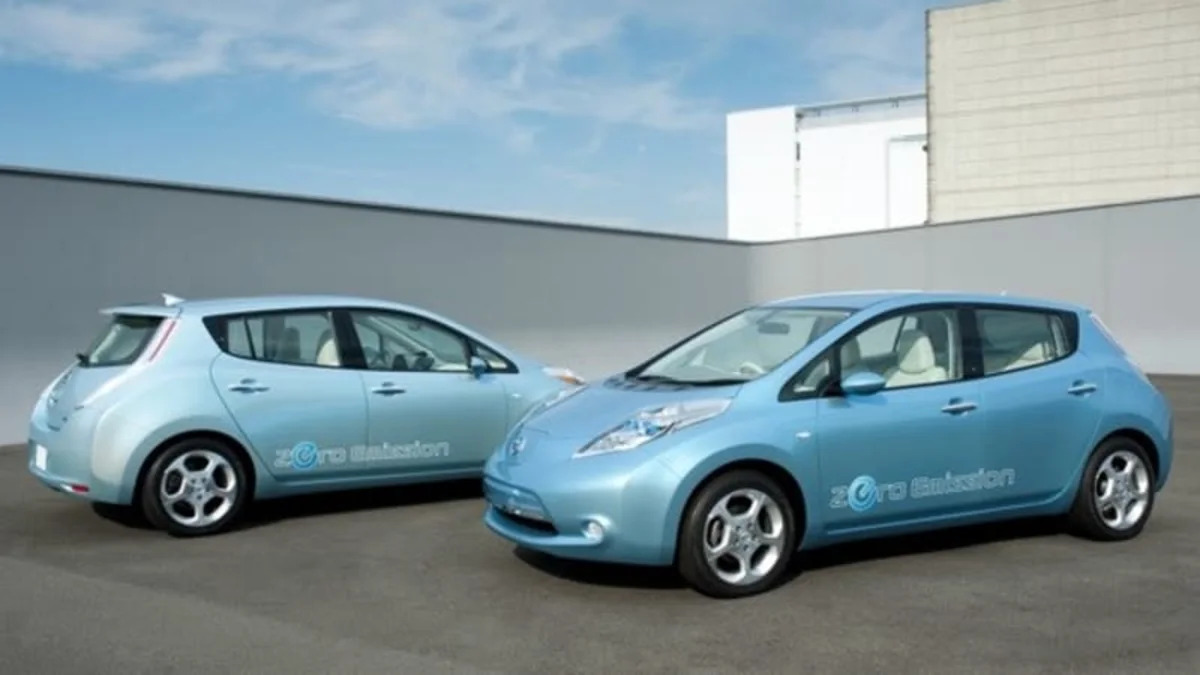Nissan Leaf – Click above for high-res image gallery
The earthquake and tsunami disaster that struck Japan in early March deeply affected the Nissan Leaf in some surprising ways. We've heard multiple times about the way the quake impacted – or will impact – production and sales in a negative way (details here), but the truth is that the quake and the resulting recovery period have made some people even more emphatic that the Leaf – and, truth be told, all electric cars – is the right kind of car for the 21st Century.
"Nissan's goal is not becoming a [Zero Emission] car provider but a creator of ZE society by taking a comprehensive ZE approach." This was written of a slide in a recent presentation by Hideaki Watanabe, Nissan's vice-president of zero-emissions vehicles. A ZE society, for example, recognizes that, in some circumstances, a battery-powered car can do much more than one powered by gasoline.
Take, for example, the fact that if bi-directional current flow technology is installed in the car and a home, then the 24 kWH worth of energy in the Leaf's lithium battery is just about enough to power an American house for an entire day. In a situation like the Japanese disaster, though, people don't need to run their flat-screen TVs or all their other creature comforts, which means that 24 kWh can go a long way to providing emergency services. The Leaf is not yet capable of discharging its energy into a home, but a prototype version of this technology, most likely using the CHAdeMO system, could be ready by the end of this year. For the Mitsubishi i-MiEV, of course, something similar is already available.
More important, though, was that the Leaf was able to provide some non-hypothetical assistance. Nissan sent 66 Leafs to the three prefectures in the Tohoku region that were most affected by the earthquake and tsunami. While some critics can't stop talking about range limits with EVs, in this situation, the gas-powered cars were stuck going nowhere because the electricity supply returned quicker than the petrol supply. Thus, by getting trickle charged wherever possible overnight, the mobile Leafs went around to the refugee camps and assisted victims. The takeaway point? In a weird twist, the earthquake increased long-term demand for plug-in vehicles while it limited supply in the short term. The world is a strang place.
[Source: Nissan]


Sign in to post
Please sign in to leave a comment.
Continue